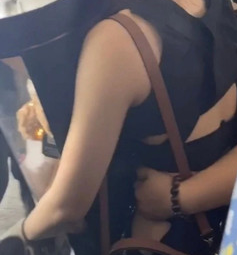
The gesture can happen anywhere—a crowded party, while guiding you through a door, or standing beside you at a family gathering. A man’s hand finds its way to the curve of your waist. It’s a simple act, but one laden with unspoken meaning. In that single point of contact, an entire conversation can be happening without a single word.
If a man puts his hand on your waist, it’s because he is communicating on a primal, physical level. The reason, however, is not a single answer but a spectrum of intentions, decoded by context, pressure, and duration.
The Protective Claim: “You Are In My Care”
This is one of the most common and traditional meanings. In a crowded or potentially chaotic space, the hand on the waist is a non-verbal signal of guardianship. It’s a way of saying, “I am here, I am with you, and I will create a buffer between you and the world.” The pressure is usually firm and guiding, not lingering. It’s the gesture of a partner steering you through a busy room, a father guiding his daughter at her wedding, or a man ensuring you get safely into a car. It’s a gesture of cherishing and safeguarding.
The Proprietary Signal: “You Are With Me”
This meaning lives in the same neighborhood as protection, but with a different tone. Here, the hand is less about guidance and more about a quiet, confident claim. It’s a signal to others in the room that you are together. This isn’t necessarily negative; in a committed relationship, it can be a proud, affectionate statement. However, when the context is new or the dynamic is unclear, this same gesture can feel territorial, a silent broadcasting of possession to dissuade others from approaching.
The Intimate Bridge: “I Am Drawing You Closer”
This is the language of romance and attraction. Unlike the protective or proprietary gesture, which is often public, this one can happen in a quiet corner. The touch is slower, more deliberate. It might be a pull inward, a gentle squeeze, or a hand that rests with a soft, lingering pressure. This is not about navigating a space; it’s about closing the emotional and physical space between two people. It’s a prelude, a question asked with the hand, inquiring if you will lean in, too.
The Practical Guide: “This Way, Please”
Sometimes, a hand on the waist is purely functional. In a loud room where voices can’t be heard, or when your attention is elsewhere, it’s an efficient way to direct your movement. The touch is brief, purposeful, and immediately withdrawn once its goal is achieved—moving you away from an obstacle or getting your attention. There is no lingering intimacy or claim; it is a tool for navigation.
How to Decode the Touch
The true meaning lies not in the act itself, but in its nuances:
- The Context: Is it a crowded gala or a quiet dinner for two?
- The Pressure: Is it a firm, guiding push or a soft, magnetic pull?
- The Duration: Does it linger, inviting a response, or is it brief and functional?
- Your Relationship: Is he your husband of thirty years or a new acquaintance?
A hand on the waist is a powerful piece of non-verbal vocabulary. It can be a shield, a claim, a question, or a simple nudge. By paying attention to the silent conversation of the body, you can understand the true message being sent, allowing you to decide whether to lean into its meaning, or gracefully step away.